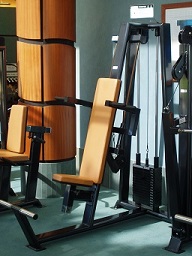
Health and Fitness Course - Program Management
- Learn new skills to manage fitness oriented services
- Learn fitness program management including fitness testing, exercise programming and prescription.
- Improve your current skills if you already work in the health and fitness industry
Prerequisites are either Health and Fitness I or a recognised fitness leaders certificate - You can speak with one of our Academic Officers in this department to check your current skills or experience can act as a prerequisite.